
The Serene Alentejo Coast: Portugal's Hidden Gem
Discover the Alentejo Coast: Portugal's serene retreat with pristine beaches, dramatic cliffs, and charming villages that promise an unforgettable escape.
The Alentejo Coast, stretching along Portugal's southwestern shoreline, is a haven for those seeking tranquility and unspoiled natural beauty. This lesser-known destination boasts a stunning combination of sweeping beaches, rugged cliffs, and charming coastal villages, making it an ideal retreat for nature lovers and adventurers alike. Visitors to the Alentejo Coast can explore a variety of landscapes, from the golden sands of Comporta Beach to the dramatic cliffs of Cabo Sardão. The region's protected natural parks, such as the Southwest Alentejo and Vicentine Coast Natural Park, offer excellent opportunities for hiking, bird-watching, and discovering unique flora and fauna. In addition to its natural wonders, the Alentejo Coast is rich in cultural heritage. The picturesque fishing villages, like Porto Covo and Vila Nova de Milfontes, provide a glimpse into traditional Portuguese life, with their whitewashed houses, narrow cobblestone streets, and vibrant local markets. The area's culinary delights are not to be missed either, with fresh seafood and regional specialties like 'açorda' and 'migas' tantalizing the taste buds. Whether you're looking to unwind on a secluded beach, embark on a scenic hike, or immerse yourself in the local culture, the Alentejo Coast offers a unique and unforgettable experience for every traveler.
Local tips in Alentejo Coast
- Visit in the shoulder seasons (May-June or September-October) to enjoy milder weather and fewer crowds.
- Rent a car for the best flexibility in exploring the remote beaches and villages along the coast.
- Try local dishes, especially seafood, at small family-run restaurants for an authentic culinary experience.
- Pack comfortable shoes for hiking and exploring the natural parks and coastal trails.
- Take time to visit the local markets to sample regional produce and traditional crafts.
The Serene Alentejo Coast: Portugal's Hidden Gem
The Alentejo Coast, stretching along Portugal's southwestern shoreline, is a haven for those seeking tranquility and unspoiled natural beauty. This lesser-known destination boasts a stunning combination of sweeping beaches, rugged cliffs, and charming coastal villages, making it an ideal retreat for nature lovers and adventurers alike. Visitors to the Alentejo Coast can explore a variety of landscapes, from the golden sands of Comporta Beach to the dramatic cliffs of Cabo Sardão. The region's protected natural parks, such as the Southwest Alentejo and Vicentine Coast Natural Park, offer excellent opportunities for hiking, bird-watching, and discovering unique flora and fauna. In addition to its natural wonders, the Alentejo Coast is rich in cultural heritage. The picturesque fishing villages, like Porto Covo and Vila Nova de Milfontes, provide a glimpse into traditional Portuguese life, with their whitewashed houses, narrow cobblestone streets, and vibrant local markets. The area's culinary delights are not to be missed either, with fresh seafood and regional specialties like 'açorda' and 'migas' tantalizing the taste buds. Whether you're looking to unwind on a secluded beach, embark on a scenic hike, or immerse yourself in the local culture, the Alentejo Coast offers a unique and unforgettable experience for every traveler.
When is the best time to go to Alentejo Coast?
Iconic landmarks you can’t miss
Parque Natural da Arrábida
Explore the scenic beauty and diverse wildlife of Parque Natural da Arrábida, a national park in Portugal perfect for adventure and relaxation.
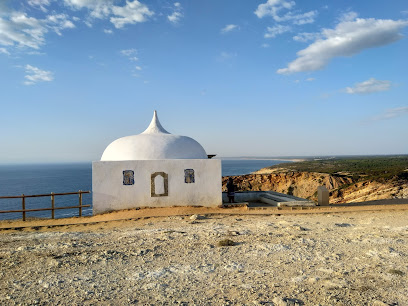
Parque Natural do Sudoeste Alentejano e Costa Vicentina
Explore the breathtaking landscapes of Parque Natural do Sudoeste Alentejano e Costa Vicentina, a pristine national park along Portugal's southern coast, rich in wildlife and natural beauty.
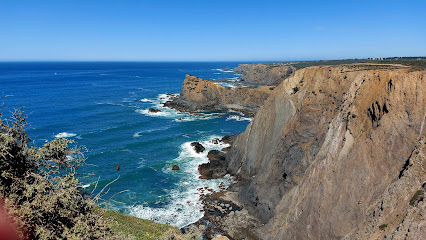
Templo Romano Évora
Explore the Templo Romano Évora, a stunning Roman temple and historical site that showcases the rich heritage of Portugal's ancient past.
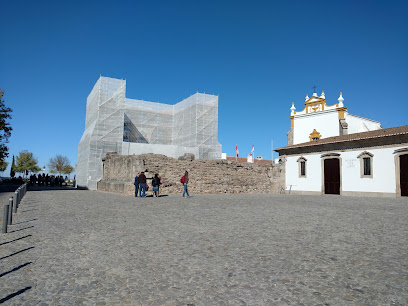
Monsaraz Castle
Explore the enchanting Monsaraz Castle, a medieval gem offering stunning views and a glimpse into Portugal's rich history amidst the beautiful Alentejo landscape.
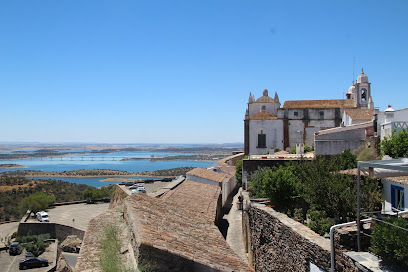
Chapel of Bones (Évora)
Explore the Chapel of Bones in Évora, a unique tourist attraction showcasing a haunting yet beautiful display of human bones and rich historical significance.
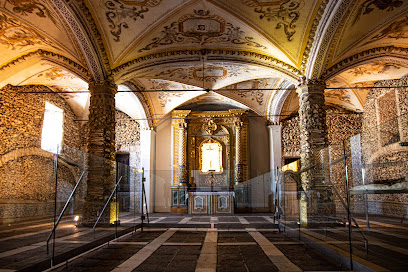
Praia Fluvial de Monsaraz
Explore the scenic beauty of Praia Fluvial de Monsaraz, a serene river beach in Portugal's Alentejo region, perfect for relaxation and adventure.
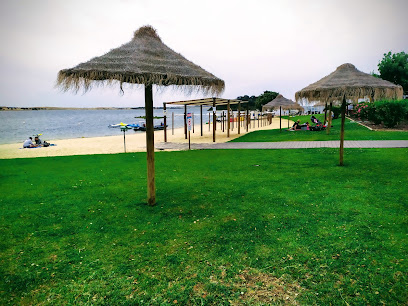
Badoca Safari Park
Discover Badoca Safari Park, a thrilling wildlife adventure in Vila Nova de Stª André, perfect for families and animal enthusiasts looking for a unique experience.
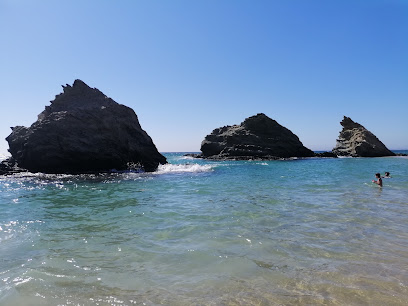
Castle of Marvão
Explore the historic Castle of Marvão: a stunning medieval fortress offering breathtaking views and rich cultural experiences in the heart of Portugal.
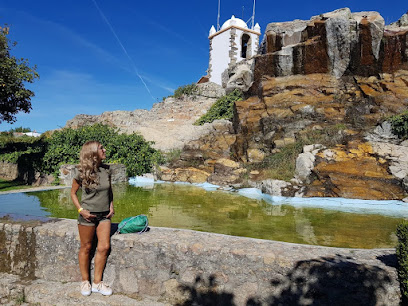
Elvas Castle
Explore the stunning Elvas Castle, a UNESCO World Heritage site, and immerse yourself in Portugal's rich military history and breathtaking landscapes.
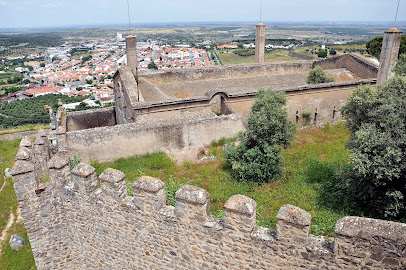
Praia Fluvial da Amieira
Experience the enchanting Praia Fluvial da Amieira, a tranquil river beach in Portugal, perfect for swimming, fishing, and relaxation amidst stunning natural scenery.
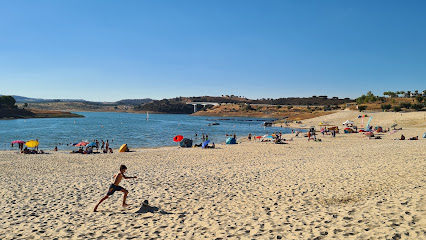
Almendres Cromlech
Experience the ancient wonder of Almendres Cromlech, a mesmerizing megalithic site in Portugal that reveals the mysteries of prehistoric civilization.
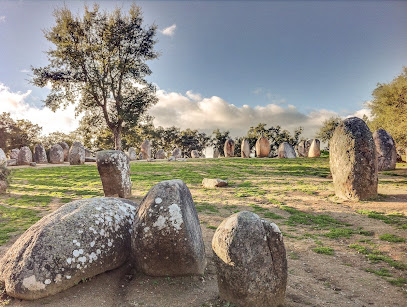
River beach Portagem
Experience the tranquil beauty of River Beach Portagem, a serene escape along the River Tejo, perfect for relaxation and family fun.
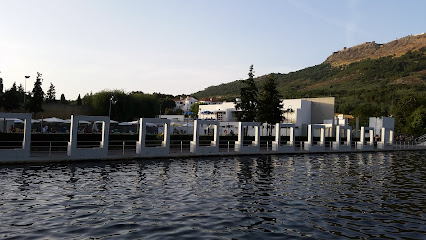
Castle of Evoramonte
Discover the enchanting Castle of Evoramonte, where medieval history meets breathtaking views in the heart of Portugal.
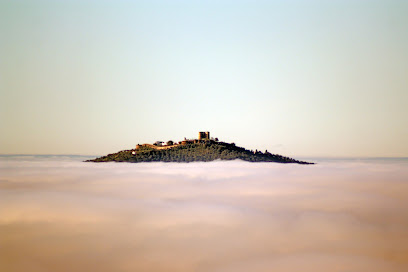
Lagoas de Santo André e da Sancha Nature Reserve
Discover the tranquil beauty and rich biodiversity of Lagoas de Santo André e da Sancha Nature Reserve, a natural haven in Portugal's Alentejo region.
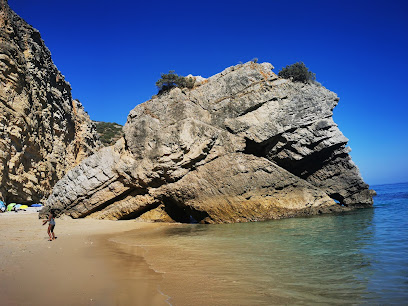
Praia Fluvial de Mourão
Experience the tranquil beauty of Praia Fluvial de Mourão, a perfect lakeside retreat in Portugal's Alentejo region, ideal for swimming and relaxation.

Unmissable attractions to see
Parque Natural do Sudoeste Alentejano e Costa Vicentina
Explore the stunning landscapes and rich biodiversity of Parque Natural do Sudoeste Alentejano e Costa Vicentina, a must-visit natural wonder in Portugal.

Templo Romano Évora
Explore the Roman Temple of Évora, a breathtaking historical gem that showcases Portugal's rich Roman heritage and architectural beauty.

Monsaraz Castle
Discover the stunning Monsaraz Castle, a historic fortress offering breathtaking views and a glimpse into Portugal's rich medieval heritage.

Praia da Rocha
Experience the breathtaking beauty of Praia da Rocha, a premier beach destination with stunning cliffs, vibrant nightlife, and delicious local cuisine.
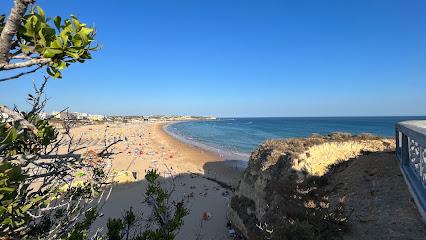
Chapel of Bones (Évora)
Explore the captivating Chapel of Bones in Évora, a haunting monument where history, art, and spirituality converge.
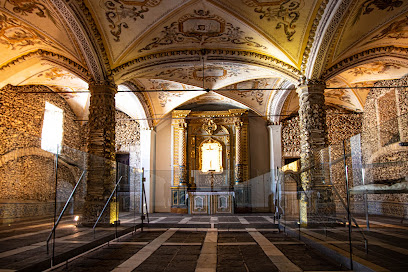
Badoca Safari Park
Experience the thrill of wildlife and adventure at Badoca Safari Park, a premier destination for family fun in Vila Nova de Stª André, Portugal.
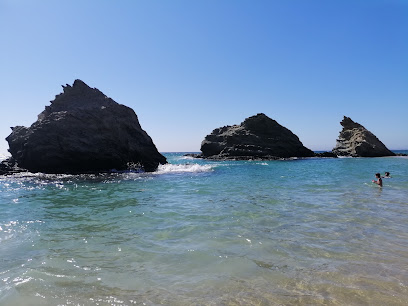
Praia dos Três Irmãos
Discover the enchanting beauty of Praia dos Três Irmãos, a stunning public beach in Alvor, Portugal, perfect for relaxation and adventure.
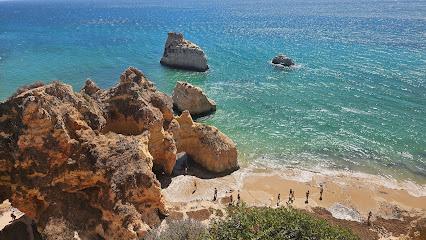
Reserva Natural do Estuário do Sado
Experience the serene beauty and rich biodiversity of Reserva Natural do Estuário do Sado, a nature lover's paradise in Setúbal, Portugal.

Almendres Cromlech
Explore Almendres Cromlech, Portugal's ancient megalithic wonder, where history and nature intertwine in stunning landscapes.
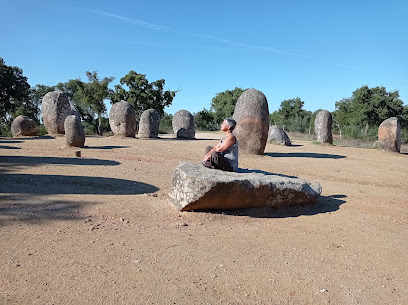
Camping Milfontes
Experience the tranquility of Camping Milfontes, where lush landscapes meet stunning beaches in Vila Nova de Milfontes, Portugal.

Praia da Arrifana
Experience the stunning cliffs and crystal-clear waters of Praia da Arrifana, a must-visit beach destination in the Algarve, Portugal.

Praia Fluvial do Alamal
Experience the tranquility of Praia Fluvial do Alamal, a picturesque lakeside retreat perfect for swimming and reconnecting with nature in Portugal.
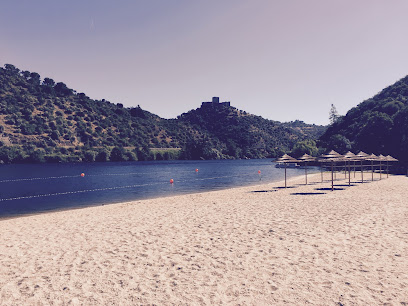
Praia Fluvial de Mourão
Praia Fluvial de Mourão: A serene lakeside paradise in Portugal, perfect for swimming, sunbathing, and enjoying nature's beauty.
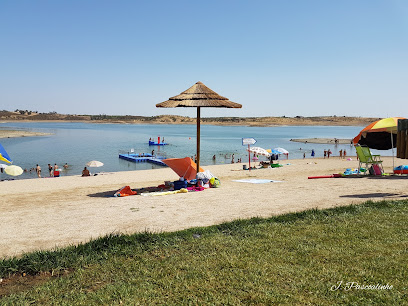
River Beach Cinco Reis
Experience the tranquility of River Beach Cinco Reis, a hidden gem in Beja, Portugal, perfect for relaxation, swimming, and outdoor adventures.
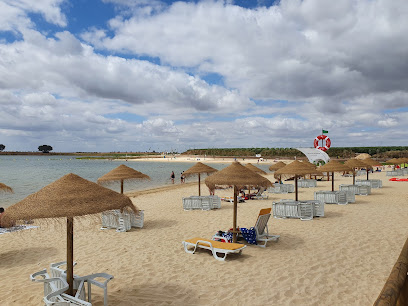
Castle of Mértola
Discover the Castle of Mértola, a historical gem in Portugal, offering stunning views and a rich tapestry of cultural heritage perfect for every traveler.

Essential places to dine
Costa Alentejana
Experience authentic Portuguese cuisine at Costa Alentejana in Zambujeira do Mar – where fresh seafood meets breathtaking ocean views.
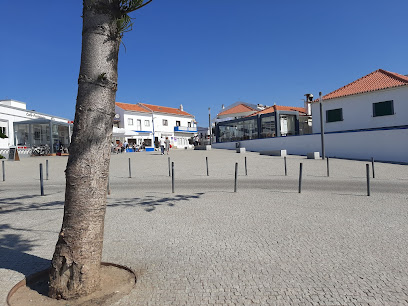
Casa do Alentejo
Experience authentic Alentejan flavors at Casa do Alentejo in Castro Verde—where traditional cuisine meets warm hospitality.
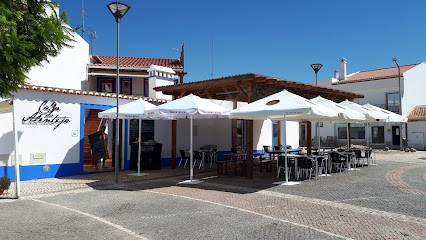
O Espalha Brasas
Discover authentic Portuguese flavors at O Espalha Brasas in Borba – where grilled specialties meet warm hospitality.
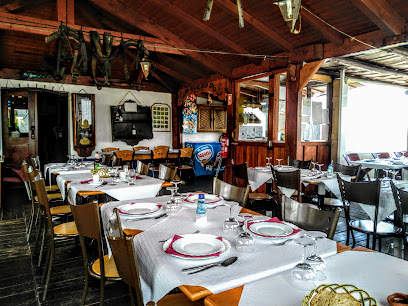
Adega Velha
Experience authentic Portuguese cuisine at Adega Velha in Mourão – where tradition meets exceptional hospitality.

Café Alentejo
Discover authentic Portuguese flavors at Café Alentejo in Évora - where culinary tradition meets modern dining.
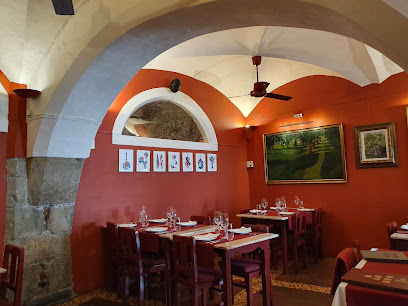
Vinho e Noz
Discover authentic Portuguese cuisine at Vinho e Noz in Évora – where every meal tells a story through exquisite flavors.
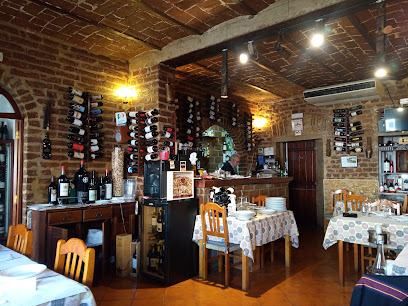
Herdade do Esporão
Experience gourmet dining with breathtaking vineyard views at Herdade do Esporão in Portugal's Alentejo region.
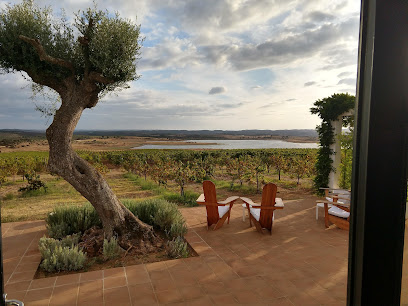
Casa Alentejo
Discover authentic Portuguese flavors at Casa Alentejo in Elvas - where tradition meets culinary excellence.
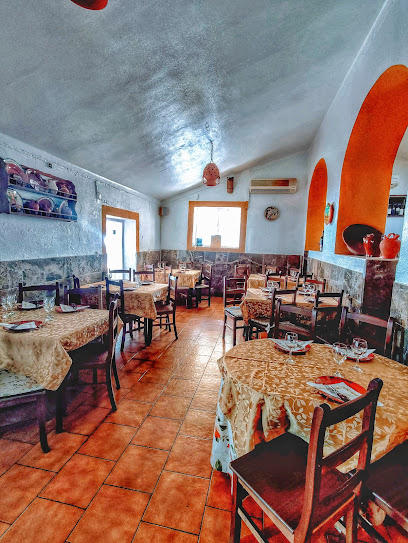
A Talha De Azeite
Experience authentic Portuguese cuisine with exquisite olive oil flavors at Grândola's culinary treasure - A Talha De Azeite.
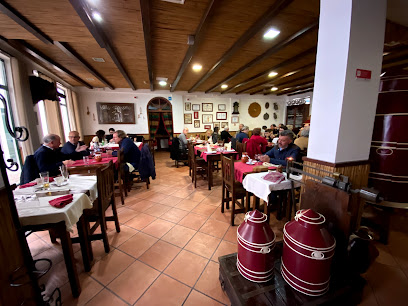
O Portão Restaurante
Experience authentic Portuguese flavors at O Portão Restaurante in Ferreira do Alentejo - where tradition meets taste!

Alentejo
Explore Alentejo: Experience Portugal's rustic charm with breathtaking landscapes and authentic culinary delights.
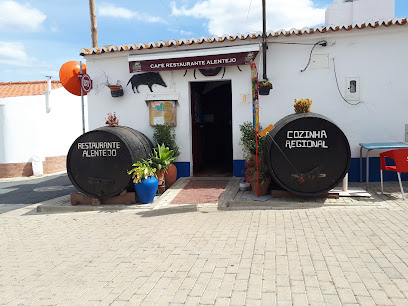
Restaurante Varanda do Alentejo
Discover authentic Portuguese cuisine at Restaurante Varanda do Alentejo in Marvão – where local flavors meet unforgettable dining experiences.
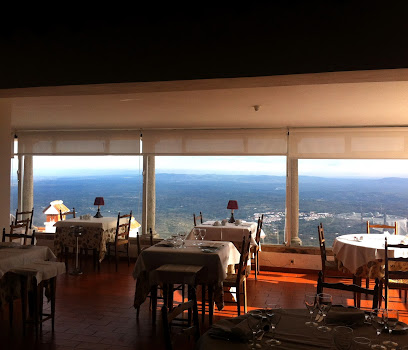
Passarinho
Experience authentic Portuguese cuisine at Passarinho - where tradition meets taste in a cozy setting.
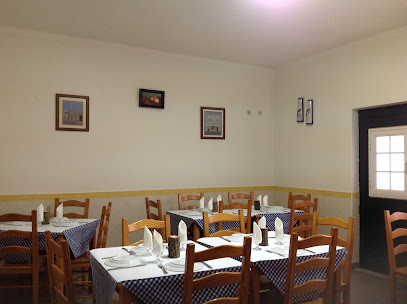
A Chaminé
Experience authentic Portuguese flavors at A Chaminé in Mourão, where traditional dishes meet warm hospitality.

A Cavalariça
Discover authentic Portuguese cuisine at A Cavalariça in Castro Verde—where tradition meets flavor in a charming setting.

Markets, malls and hidden boutiques
Parque Natural do Sudoeste Alentejano e Costa Vicentina
Explore the stunning landscapes of Parque Natural do Sudoeste Alentejano e Costa Vicentina, a coastal paradise of cliffs, beaches, and diverse wildlife.
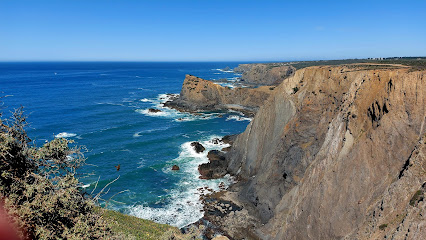
Évora Plaza
Discover Évora Plaza, a vibrant shopping mall in Évora, featuring a variety of stores, dining options, and entertainment for every visitor.
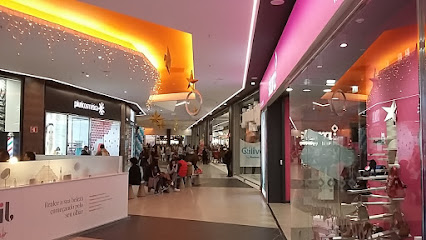
Auchan Évora
Explore Auchan Évora, a vibrant hypermarket offering a wide array of fresh produce, local specialties, and household goods for every traveler.

Decathlon Évora
Explore Decathlon Évora for a vast selection of sporting goods, outdoor clothing, and equipment for every adventure, all under one roof.
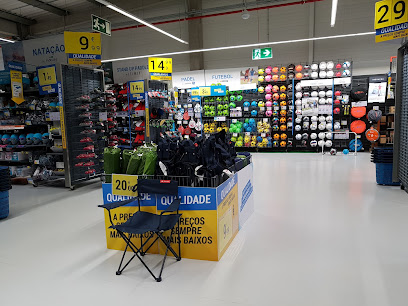
Continente Évora
Discover the best of local and international products at Continente Évora, a premier supermarket in the heart of Évora, Portugal.

Bricomarché Évora
Explore Bricomarché Évora for a wide selection of home goods, building materials, and garden essentials in the heart of Évora.

Sport Zone Évora
Discover the best sportswear and equipment at Sport Zone Évora, your ultimate destination for athletic needs in the heart of Portugal.

Continente Modelo Beja Retail
Explore Beja's vibrant shopping scene at Continente Modelo, your go-to supermarket for fresh local produce and specialty goods.
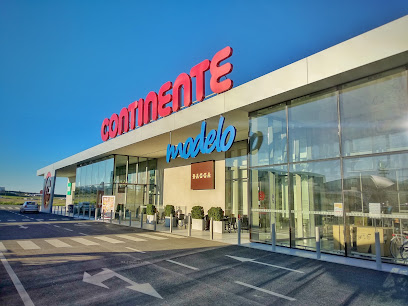
Hiper China
Discover Hiper China in Évora: Your ultimate destination for diverse shopping and local treasures, offering great variety and unbeatable prices.
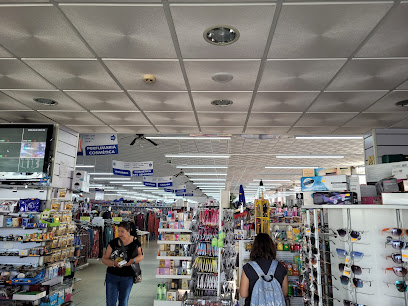
Sport Zone Beja
Explore top-notch athletic apparel at Sport Zone Beja – a sportswear haven for fitness enthusiasts in Portugal.

Ervideira Wine Shop
Experience the rich flavors of Alentejo wines at Ervideira Wine Shop, Évora's premier destination for wine enthusiasts.
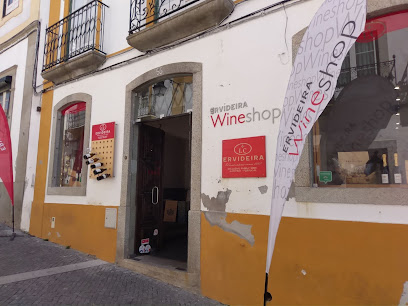
Loja Mr. Blue Évora Plaza
Explore Loja Mr. Blue Évora Plaza for the latest in men's fashion, beachwear, and stylish accessories in a vibrant shopping environment.

Gente da Minha Terra
Explore Gente da Minha Terra in Évora for unique gifts and authentic souvenirs that celebrate local culture and craftsmanship.

O Cesto Artesanato - Casas Novas & Figueiredo, Lda.
Explore the heart of Évora at O Cesto Artesanato, where local craftsmanship meets unforgettable souvenirs in a charming atmosphere.
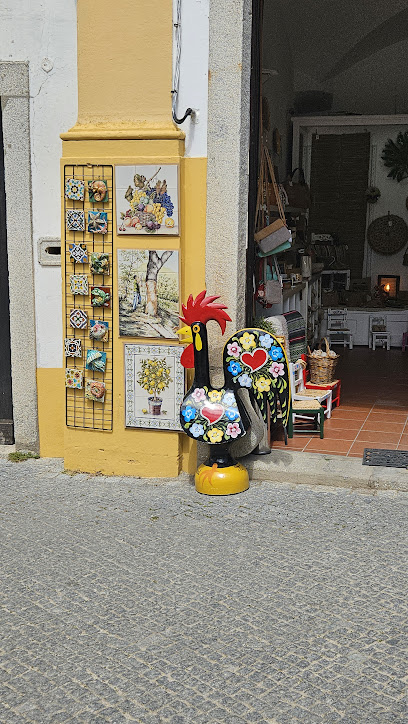
LTintas Évora
Explore LTintas Évora for top-quality paints and building materials, your essential stop for home improvement in the historic city of Évora.

Essential bars & hidden hideouts
Alqueva Bar/Restaurante
Discover the culinary delights of Alqueva Bar/Restaurante, where local flavors meet breathtaking lakeside views for an unforgettable dining experience.
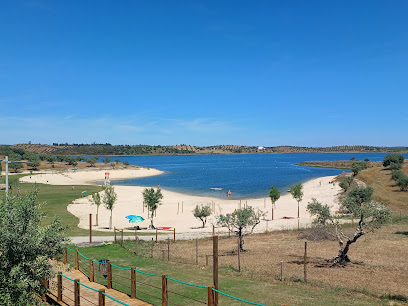
Magic Cactus
Discover the taste of Portugal at Magic Cactus, a grill restaurant offering fresh, local ingredients and stunning views at Praia da Vieirinha.

Blue Bar
Discover Blue Bar in VNd, where creative cocktails and a lively atmosphere come together to create an unforgettable nightlife experience.
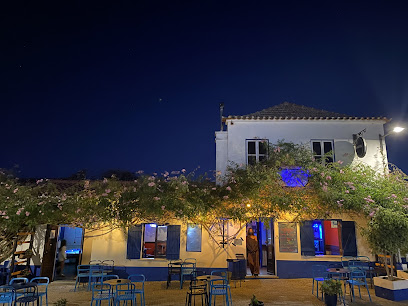
Old Court Wine Bar
Savor the rich flavors of Portugal at Old Court Wine Bar, where traditional cuisine meets a delightful selection of local wines.
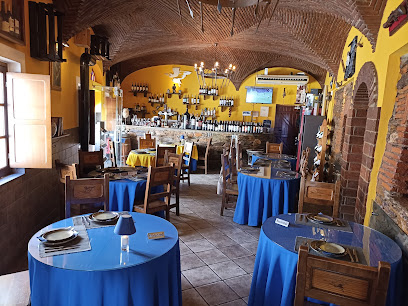
The Pub Sports Caffe
Discover Beja's favorite spot for sports lovers at The Pub Sports Caffe – enjoy drinks, food, and vibrant atmosphere!
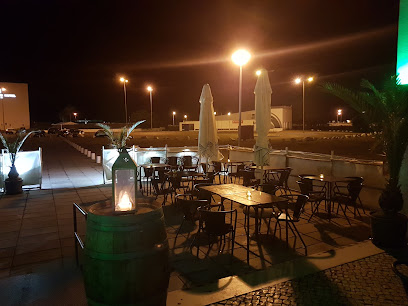
Bar O Tunnel
Discover the authentic flavors of Portugal at Bar O Tunnel in Évora, where friendly service meets delicious local cuisine.

Nº 6 Bar
Nº 6 Bar: Discover Sines' vibrant nightlife with friendly service and a cozy atmosphere, perfect for relaxing after a day of exploration.

Bar Culpa Tua
Experience the lively atmosphere and local flavors at Bar Culpa Tua in Évora, where nightlife comes alive with every sip.
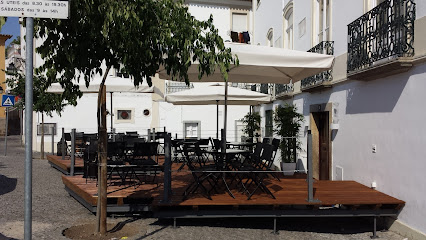
Carvalhal Beach Nature
Experience the serene beauty of Carvalhal Beach Nature, where stunning views meet delicious cuisine in a tranquil coastal paradise.
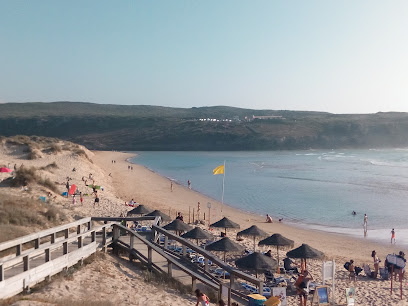
Sunset Bar. Barragem do Caia
Experience stunning sunsets and affordable drinks at the charming Sunset Bar, a must-visit spot by the Barragem do Caia.

Santo André Beach Lounge
Experience the vibrant atmosphere and stunning views at Santo André Beach Lounge, a must-visit destination for relaxation and local flavors.
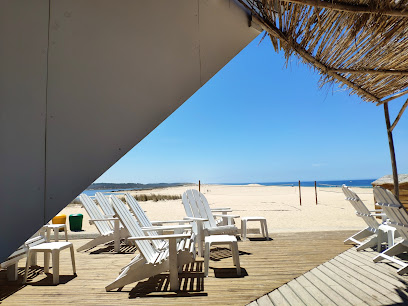
Alegrias e Vinho Tinto Botequim
Discover the culinary delights of Évora at Alegrias e Vinho Tinto Botequim, where authentic Portuguese flavors meet a charming bistro atmosphere.

Kat´s Bar
Experience the charm of Montargil at Kat's Bar, a delightful cafe and bar offering local flavors and a cozy atmosphere.

Bar Lança
Discover the charm of Melides at Bar Lança, a vibrant coastal bar offering stunning views, delicious drinks, and a relaxed atmosphere perfect for every traveler.
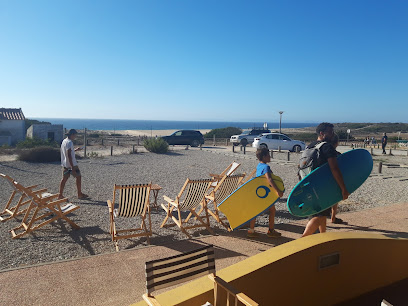
Avista Bar
Discover the perfect blend of flavors and ambiance at Avista Bar in Évora, where culinary excellence meets vibrant nightlife.
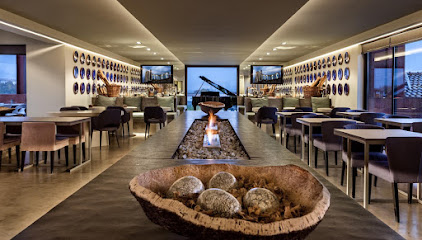
Local Phrases about Alentejo Coast
-
- HelloOlá
[oh-lah] - GoodbyeAdeus
[ah-deh-oosh] - YesSim
[seem] - NoNão
[nah-oo] - Please/You're welcomePor favor
[por fah-vohr] - Thank youObrigado
[oh-bree-gah-doo] - Excuse me/SorryDesculpe
[deh-skool-peh] - How are you?Como está?
[koh-moo ehs-tah] - Fine. And you?Estou bem. E você?
[ehs-tohoh behn. eh voh-seh] - Do you speak English?Fala inglês?
[fah-lah een-glehs] - I don't understandNão entendo
[nah-oo ehn-tehn-doo]
- HelloOlá
-
- I'd like to see the menu, pleaseGostaria de ver o menu, por favor
[goh-stah-ree-ah deh vehr oo meh-noo, por fah-vohr] - I don't eat meatNão como carne
[nah-oo koh-moo kahr-neh] - Cheers!Saúde!
[sow-deh] - I would like to pay, pleaseGostaria de pagar, por favor
[goh-stah-ree-ah deh pah-gahr, por fah-vohr]
- I'd like to see the menu, pleaseGostaria de ver o menu, por favor
-
- Help!Socorro!
[soh-koh-roh] - Go away!Vá embora!
[vah ehm-boh-rah] - Call the Police!Chame a Polícia!
[shah-meh ah poh-lee-see-ah] - Call a doctor!Chame um médico!
[shah-meh oom meh-dee-koh] - I'm lostEstou perdido
[ehs-tohoh pehr-dee-doo] - I'm illEstou doente
[ehs-tohoh doo-ehn-teh]
- Help!Socorro!
-
- I'd like to buy...Gostaria de comprar...
[goh-stah-ree-ah deh kohm-prahr] - I'm just lookingEstou só a ver
[ehs-tohoh soh ah vehr] - How much is it?Quanto custa?
[kwahn-toh koosh-tah] - That's too expensiveIsso é muito caro
[ee-soh eh moo-ee-toh kah-roo] - Can you lower the price?Pode baixar o preço?
[poh-deh by-shahr oo preh-soh]
- I'd like to buy...Gostaria de comprar...
-
- What time is it?Que horas são?
[keh oh-rahsh sah-oh] - It's one o'clockÉ uma hora
[eh ooh-mah oh-rah] - Half past (10)Meio-dia (10)
[may-oo dee-ah (dheez)] - MorningManhã
[mah-nyah] - AfternoonTarde
[tahr-deh] - EveningNoite
[noy-teh] - YesterdayOntem
[ohn-tehm] - TodayHoje
[oh-zheh] - TomorrowAmanhã
[ah-mah-nyah] - 1Um
[oom] - 2Dois
[doysh] - 3Três
[trehsh] - 4Quatro
[kwah-troh] - 5Cinco
[seen-koh] - 6Seis
[saysh] - 7Sete
[seh-teh] - 8Oito
[oy-toh] - 9Nove
[noh-veh] - 10Dez
[dehz]
- What time is it?Que horas são?
-
- Where's a/the...?Onde fica...
[on-deh fee-kah] - What's the address?Qual é o endereço?
[kwahl eh oo ehn-deh-reh-soh] - Can you show me (on the map)?Pode mostrar-me (no mapa)?
[poh-deh moh-strahr-meh (noo mah-pah)] - When's the next (bus)?Quando é o próximo (autocarro)?
[kwahn-doo eh oo proh-ksee-moo (ow-toh-kah-roo)] - A ticket (to ....)Um bilhete (para ...)
[oom bee-lyeh-teh (pah-rah)]
- Where's a/the...?Onde fica...
History of Alentejo Coast
-
The Alentejo Coast has been inhabited since prehistoric times, with evidence of Neolithic and Bronze Age settlements. The region's strategic location along the Atlantic made it a crossroads for various ancient civilizations, including the Phoenicians, Romans, and Visigoths. Archaeological findings, such as pottery and tools, tell the story of these early inhabitants who thrived on agriculture and fishing.
-
During the Roman period, the Alentejo Coast was part of the Roman province of Lusitania. The Romans left a lasting impact on the region, establishing towns, roads, and aqueducts. Ruins of Roman villas and baths can still be found, showcasing the advanced engineering and architectural skills of the time. The town of Tróia, located on a peninsula, was a significant Roman settlement known for its fish-salting industry.
-
The Alentejo Coast saw numerous changes during the medieval era, including the influence of the Moors, who arrived in the 8th century. They introduced new agricultural techniques, such as irrigation systems, which transformed the landscape. The Reconquista, a series of campaigns by Christian states to recapture territory from the Moors, had a profound impact on the region. By the 13th century, the Portuguese had reclaimed the area, and various castles and fortresses were built to defend against further incursions.
-
The 15th and 16th centuries marked the Age of Discoveries, during which Portugal became a leading maritime power. The Alentejo Coast played a crucial role in this era, serving as a departure point for explorers heading to Africa, Asia, and the Americas. The coastal town of Sines is famously known as the birthplace of Vasco da Gama, the explorer who found the sea route to India. This period brought wealth and influence to the region, as evidenced by the construction of grand churches and manor houses.
-
Throughout the 18th and 19th centuries, the Alentejo Coast was predominantly agricultural. The vast plains and fertile lands were ideal for wheat, cork, and olive production. The region's economy was largely based on large estates known as 'latifundia,' which were owned by wealthy landlords and worked by tenant farmers. This agrarian system shaped the social and economic landscape of the region, leading to a distinct rural culture.
-
The 20th century brought significant changes to the Alentejo Coast. The Salazar dictatorship, which lasted until 1974, had a profound impact on the region's social and economic fabric. The Carnation Revolution of 1974 led to widespread land reforms, redistributing land from large estates to small farmers. In recent decades, the Alentejo Coast has seen a rise in tourism, drawn by its unspoiled landscapes, pristine beaches, and rich cultural heritage. Modern developments have aimed to balance tourism with the preservation of the region's natural beauty and historical sites.
Alentejo Coast Essentials
-
The Alentejo Coast is easily accessible from major cities in Portugal. The nearest international airport is Lisbon Portela Airport, located around 120 kilometers away from the northern part of the Alentejo Coast. From Lisbon, you can rent a car, take a bus, or use the train services to reach various towns along the coast. Alternatively, Faro Airport in the Algarve region is another option, approximately 150 kilometers away from the southern part of the Alentejo Coast.
-
Transportation options along the Alentejo Coast include rental cars, buses, and trains. Renting a car is highly recommended for exploring the region at your own pace, as public transportation may not reach more remote areas. There are several bus companies that operate routes along the coast, connecting major towns and villages. The train network is limited but offers scenic routes between larger towns. Biking is also popular, with many coastal paths and trails available.
-
The official currency in Portugal is the Euro (EUR). Credit and debit cards are widely accepted in hotels, restaurants, and shops, but it is advisable to carry some cash for smaller establishments and rural areas. ATMs are readily available in most towns along the Alentejo Coast. Currency exchange services can be found in larger towns and at the airports.
-
The Alentejo Coast is generally safe for tourists, with a low crime rate. However, it is always wise to take standard precautions. Avoid leaving valuables unattended on the beach or in your car. Petty theft, such as pickpocketing, can occur in crowded areas, so remain vigilant. There are no specific high-crime neighborhoods targeting tourists, but it is best to stay alert, particularly in unfamiliar areas at night.
-
In case of emergency, dial 112 for immediate assistance. This number connects you to emergency services, including police, fire, and medical help. Hospitals and medical facilities are available in larger towns along the coast. It is advisable to have travel insurance that covers medical emergencies. Pharmacies are common, and most pharmacists speak English and can provide advice and over-the-counter medications.
-
Fashion: Do wear comfortable and casual clothing suitable for a coastal climate. Swimsuits are appropriate at the beach but should be covered in town. Religion: Do respect local customs and dress modestly when visiting religious sites. Public Transport: Do be courteous to fellow passengers and offer seats to the elderly. Avoid eating or drinking on public transport. Greetings: Do greet people with a friendly 'Olá' or 'Bom dia.' A handshake is common. Eating & Drinking: Do try local dishes and wines. Don't rush meals; dining is a leisurely activity in Portugal.
-
To experience the Alentejo Coast like a local, visit the traditional markets where you can purchase fresh seafood, local produce, and artisanal products. Engage with locals, who are known for their hospitality and willingness to share stories. Explore the region's vineyards and try the local wines. Don't miss the stunning beaches, historical towns, and natural parks. For a unique experience, consider staying in a traditional 'pousada' or rural guesthouse.
Trending Landmarks in Alentejo Coast
-
Parque Natural da Arrábida
-
Parque Natural do Sudoeste Alentejano e Costa Vicentina
-
Templo Romano Évora
-
Monsaraz Castle
-
Chapel of Bones (Évora)
-
Praia Fluvial de Monsaraz
-
Badoca Safari Park
-
Castle of Marvão
-
Elvas Castle
-
Praia Fluvial da Amieira
-
Almendres Cromlech
-
River beach Portagem
-
Castle of Evoramonte
-
Lagoas de Santo André e da Sancha Nature Reserve
-
Praia Fluvial de Mourão
Nearby Cities to Alentejo Coast
-
Things To Do in Setúbal
-
Things To Do in Lisbon
-
Things To Do in Évora
-
Things To Do in Cascais
-
Things To Do in Sintra
-
Things To Do in Huelva
-
Things To Do in Caldas da Rainha
-
Things To Do in Viseu
-
Things To Do in Badajoz
-
Things To Do in Tomar
-
Things To Do in Cádiz
-
Things To Do in Seville
-
Things To Do in Coimbra
-
Things To Do in Tangier
-
Things To Do in Ronda










